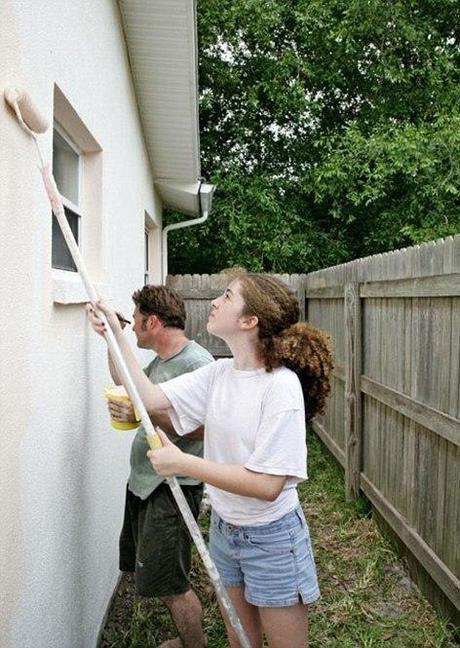Soon, a thin film of ‘solar panel’ could be painted over windows and walls to turn every home into a giant hi-tech ‘sun trap’.
The hi-tech solution could make solar energy a practical solution t the energy crisis.
The technology has long been championed as a solution to the growing energy crisis, but as it exists now, it is far too expensive.

A typical home needs around 285 square feet of solar panels to meet its electricity needs, costing around £10,000, although that does not include the expensive installation.
Scientists at USC have developed a potential pathway to cheap, stable solar cells made from nanocrystals so small they can exist as a liquid ink and be painted or printed onto clear surfaces.
The solar nanocrystals are about four nanometers in size — meaning you could fit more than 250,000,000,000 on the head of a pin — and float them in a liquid solution.
‘Like you print a newspaper, you can print solar cells,’ said Richard L. Brutchey, assistant professor of chemistry at the USC Dornsife College of Letters, Arts and Sciences.
Liquid nanocrystal solar cells are cheaper to fabricate than available single-crystal silicon wafer solar cells but are not nearly as efficient at converting sunlight to electricity.
Brutchey and Webber solved one of the key problems of liquid solar cells: how to create a stable liquid that also conducts electricity. With a relatively low-temperature process, the researchers’ method also allows for the possibility that solar cells can be printed onto plastic instead of glass without any issues with melting – resulting in a flexible solar panel that can be shaped to fit anywhere.
As they continue their research, Brutchey said he plans to work on nanocrystals built from materials other than cadmium, which is restricted in commercial applications due to toxicity.
‘While the commercialization of this technology is still years away, we see a clear path forward toward integrating this into the next generation of solar cell technologies,’ Brutchey said.
Other teams have already worked on similar technologies, using ‘quantum dots’ to create ‘solar paints’ that can absorb energy and conduct electricity.
Again, though, the research is some way from commercialisation.
The paste created by University of Notre Dame researchers, which is made of hi-tech ‘quantum dots’, can be put onto any surface and produce electricity from the sun.
The dots are semiconducting crystals which are between two and 10 nanometres in diameter and are mixed into dye that looks like normal paint.
In tests they were just one per cent efficient, less than one 10th the efficiency of a standard solar cell, but the researchers are convinced that rate will improve in the future.
The paint has prompted speculation it could one day be applied to the side of homes to turn the entire property into a giant hi-tech ‘sun trap’.
University of Notre Dame scientists used nano-sized particles of titanium oxide and covered them in either cadmium sulphide or cadmium selenide.
The paste was created by putting this into a mixture of water and alcohol.
When it was put onto a conducting material and light was shone onto it, the scientists noticed that electricity was generated.
The discovery has been praised because it is so simple to set up and required little more than a paint brush, office tape and a heat gun to make it work.
Lead researcher Prashant Kamat, a professor of Science in Chemistry and Biochemistry at Notre Dame’s Center for Nano Science and Technology, said: ‘We want to do something transformative, to move beyond current silicon-based solar technology.
‘By incorporating power-producing nanoparticles, called quantum dots, into a spreadable compound, we’ve made a one-coat solar paint that can be applied to any conductive surface without special equipment.’
He added: ‘The goal is to prepare a solar paint that has long shelf life.‘In our laboratories we have tested the performance for a few days to a week, and we find it stable as long as it is stored in the dark.
Additional tests are underway to investigate long-term stability of paints with different compositions.’
